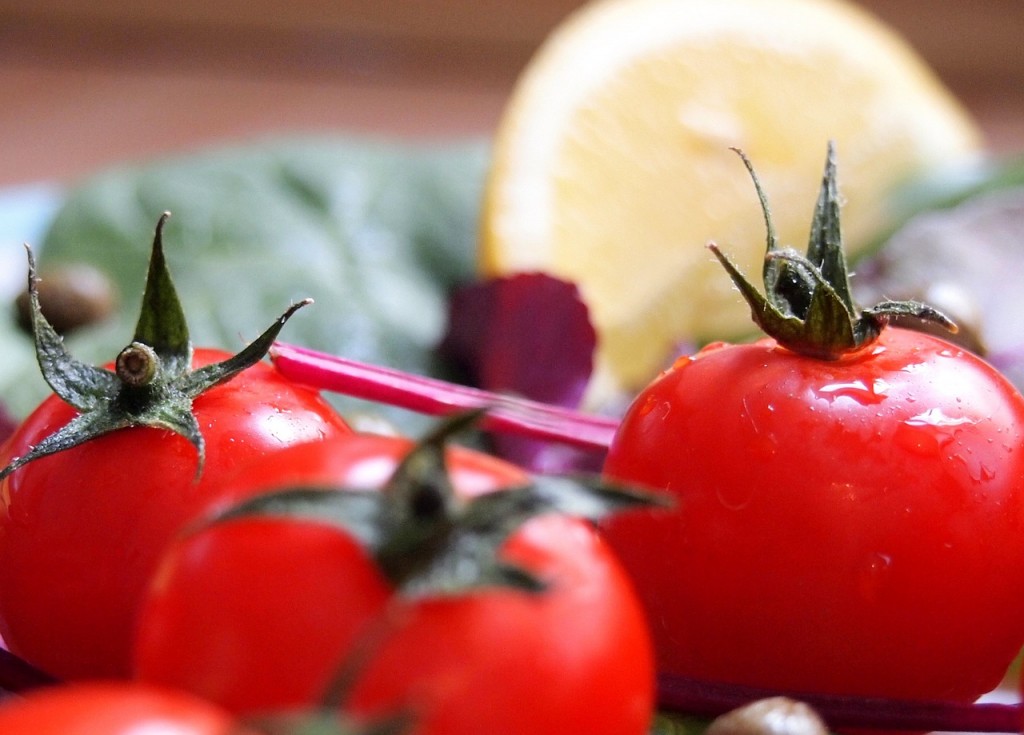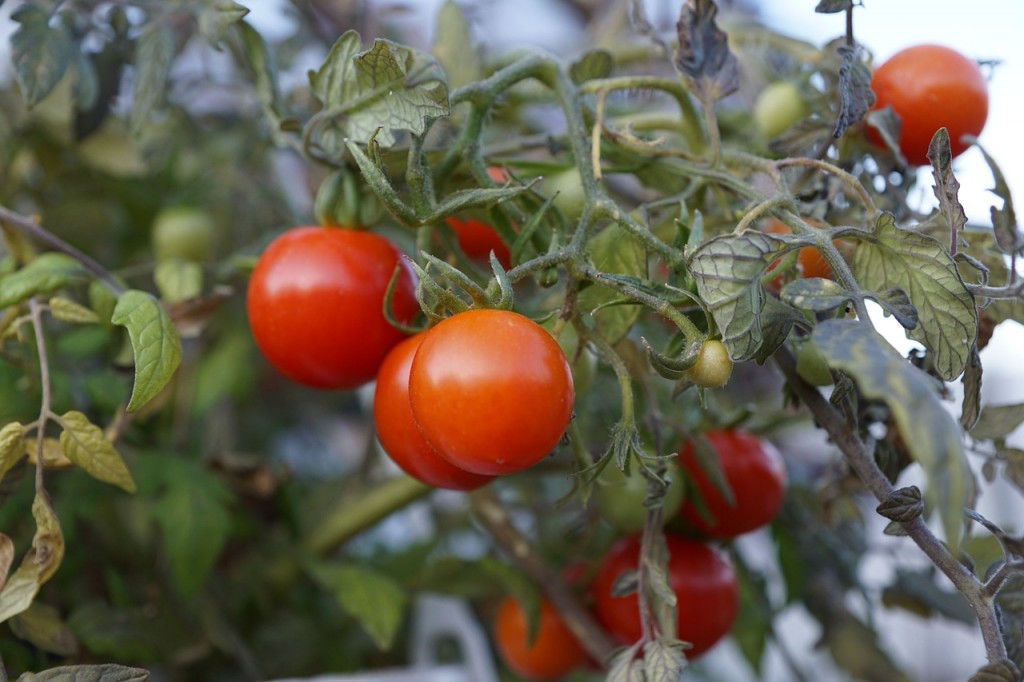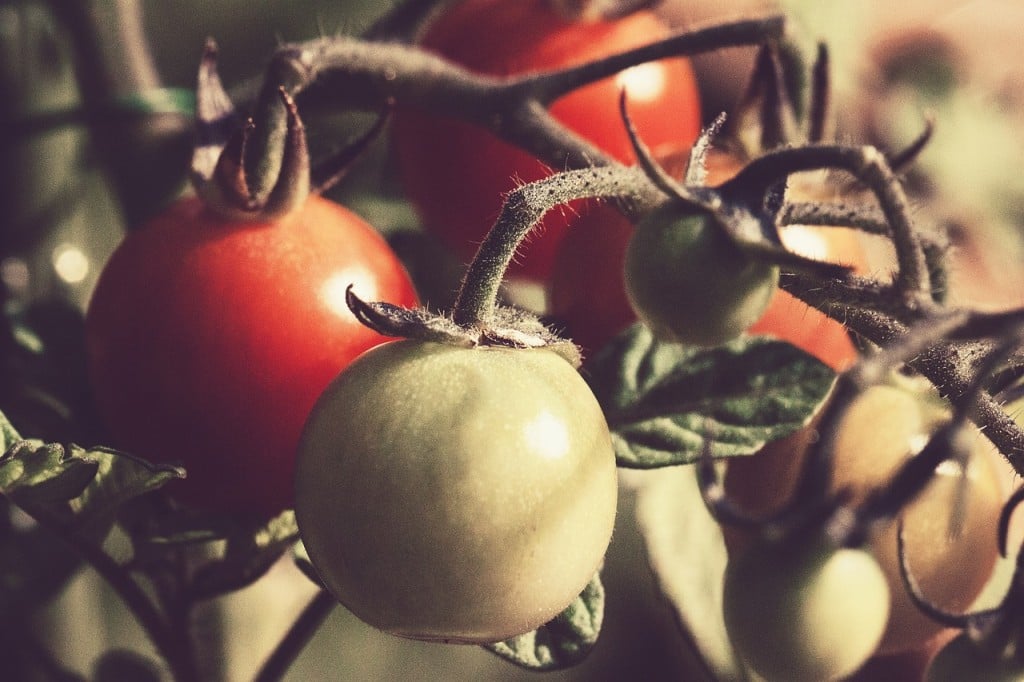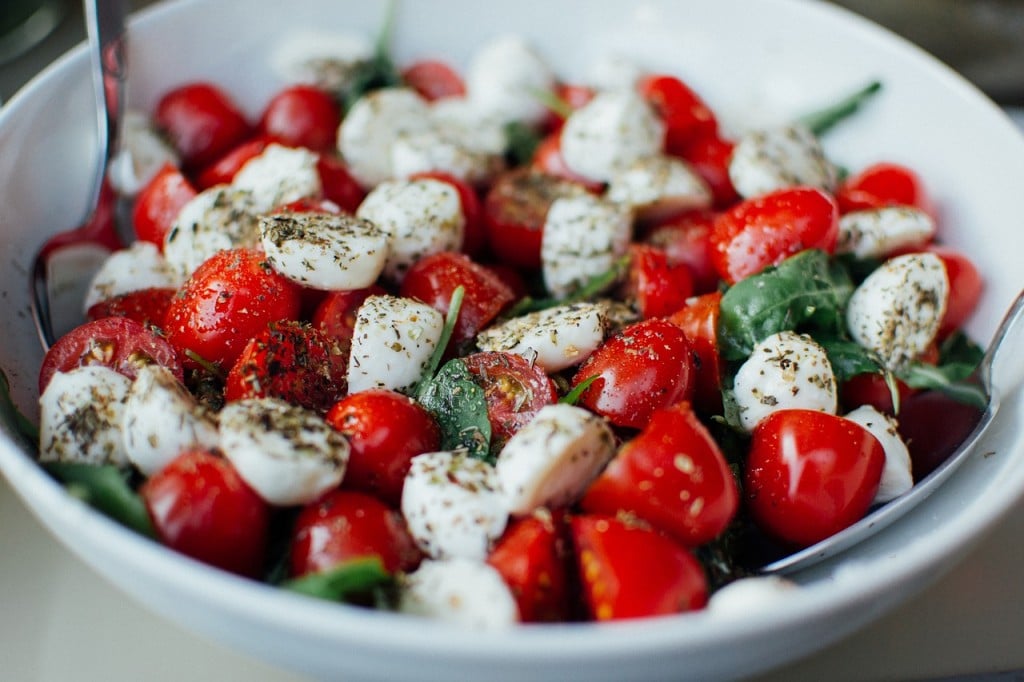
Tomatoes are fun to grow, nutritious and tasty. Follow our comprehensive guide to growing this essential crop
Most people will have a bash at growing a few tomato plants at some stage; even those with no more than a balcony can plant up a growing-bag.
And the wonderful thing about this crop is that providing they are given the minimum of care, they will respond with guaranteed crops. Look after them well, however, and they will repay you with a bumper harvest.
Propagation
Tomatoes are tender plants and need a little warmth if they are to give of their best.
A heated propagator or warm windowsill is just the thing to get them off to a flying start. Ideally they require a minimum temperature of 15C (60F) for germination, but do better if you can provide 18C (65F) at the start.
Sow seeds in seed trays, cell trays or pots filled with good, fresh sowing compost. Sow 6mm (1?4in) deep and cover with sieved soil or fine sand, label and water thoroughly, adding a fungicide to the water to combat damping-off disease if you wish.
Cover the pots or trays with a propagator lid and put in a warm place – a propagator or sunny windowsill – until germination takes place, usually within seven to 10 days. As soon as the seedlings are through they need plenty of light to prevent them from becoming leggy.
If this happens the first truss of fruit on your plants will be lost.
It is therefore essential to give the plants as much light as possible and this can be achieved by making sure the greenhouse glass is spotless or that you give them the sunniest spot you can.
Once most of your seedlings are through the cover should be removed to allow light to reach them.
Check watering every day, keeping the compost moist, but not wet. As soon as the young plants have opened their seed leaves and are large enough to handle, prick out those grown in seed trays into individual pots or large cells to grow on.

Growing on
Watch out for early attacks of greenfly and remove them with finger and thumb or spray if necessary.
Space out the plants on the greenhouse bench or windowsill as they grow to ensure that each has enough light.
If growing on the windowsill give the pots a quarter turn each day to keep stems straight and provide each plant with a split cane secured with soft wire rings or string to support the stem. Maintain even watering allowing
the surface of the compost to dry out a little in between doses, but do not let the plants wilt at any stage as any growth checks can lead to a reduction in the number of trusses. Pot up the plants in stages until they are in 12- 13cm (41?2-5in) pots.
Do not feed the plants during this stage as the fresh compost should contain enough nutrients to keep them happy.
If growing on under glass or polythene, the temperature can be reduced slowly to get the hardening off process under way.
By the time the plants are ready for planting, the daytime temperature should have been reduced to around 10C (50F).
Once the first flower opens on the first truss plants are ready for their final containers or for planting out in the open garden.
If growing an indoor type you may wish to plant into growing-bags, deep pots, small buckets or hanging baskets (bush and trailing types) filled with growing-bag or potting compost or simply into the greenhouse or polytunnel border
Planting

This couldn‘t be easier; remove the existing pot and plant so that the compost of the top of the rootball is level with or just covered by the new compost in the container.
Firm gently and water well. If planting in the open plot, plants must be hardened off properly before they go outside or the leaves will turn blue and the plants will suffer growth checks.
Continue to acclimatise them to conditions outdoors by moving them outside during the day and bringing them back in at night for a week or so and do not plant out until you are confident that the frosts are over.
Outdoors the site should be sunny and sheltered and the soil reasonably fertile. A plot which was manured the previous autumn is ideal.
Sprinkle 28-56g/sq m (1- 2oz/sq yd) of pelleted chicken manure or Growmore over the area a week prior to planting.
Supporting, training and trimming
Your tomato plants will either be determinate (bush) or indeterminate (cordon plants that grow on a single main stem) depending on the variety chosen.
Bush plants require little or no support or training so are very easy to grow. Cordon plants however do need a small amount of regular attention and this mainly involves pinching out the sideshoots as they grow.
They can grow surprisingly quickly during the summer, so it is a weekly job (at the very least) and shouldn‘t be left for too long for as well as wasting the plant‘s energy, large shoots will leave correspondingly large wounds when removed through which diseases may enter, such as botrytis (grey mould).
As the stems of cordons grow ever upwards they should be supported with strong canes or strings and these must be put in place as soon as the tomatoes are planted.
If you decide to use strings, either run one end under the rootball when planting allowing the weight of the plant to hold it in place, or tie the end to the plant pot.
Run the string around the stem of the plant, ensuring that it goes above the forming truss and tie it to the eaves of the greenhouse.
The tip of the plant is then simply wound around the string as it grows while it is still supple. If using canes, replace the original split cane and wire rings with a stout bamboo cane and string.
This will almost certainly need supporting halfway up, or at the top to help take the considerable weight of the plant and fruit later on.
Outside plants should be provided with strong stakes to take the additional weight of the plants when battered by summer winds.

Trimming or de-leafing tomatoes involves removing the lower leaves as the trusses ripen to allow more sunlight to reach the fruit.
Don’t be too enthusiastic – the aim is to remove only the old tired leaves (which will use more energy than they are producing) up to the level of the currently ripening truss.
Our summers do not generally allow plants growing outdoors to ripen more than five or six trusses and it is usual to remove the growing tip once plants have set this number.
Indoors you can take advantage of better conditions to allow plants to produce more and luckily green toms can be as useful as red ones when it comes to making pickles and chutneys for the winter.
Still, consider taking out the growing point by the end of August/middle of September to improve the quality of the remaining fruit.
Feeding
For bumper crops simply choose a good tomato food – one with lots of potash and magnesium – and apply it at half strength every watering from the time the first truss has set.



